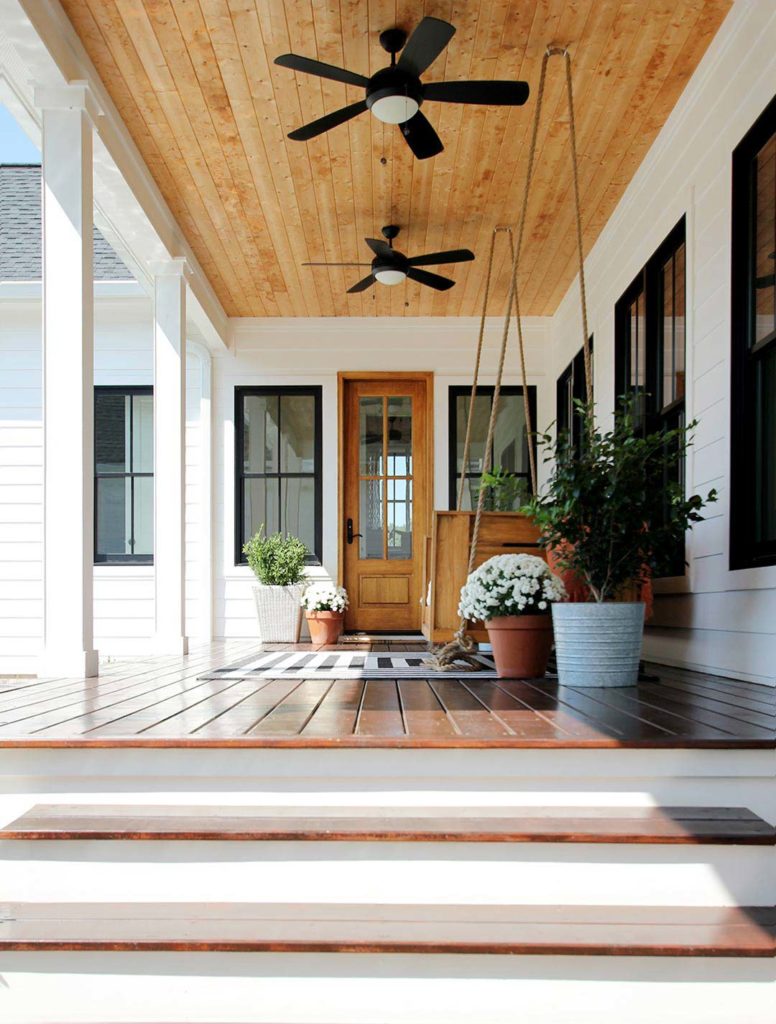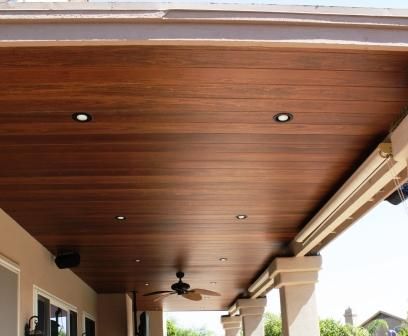When designing an inviting outdoor space, the ceiling of your porch often sets the tone for its overall ambiance. Among the many materials available, a tongue and groove cedar porch ceiling stands out for its timeless beauty, durability, and versatility. This design choice not only enhances the aesthetic appeal of your home but also provides practical benefits, such as resistance to weather and pests.

In this article, we’ll explore why a tongue and groove cedar porch ceiling is a popular choice, how to install one, and ways to maintain it for long-lasting charm. Whether you’re renovating your porch or building one from scratch, this guide has everything you need to know.
What Is a Tongue and Groove Cedar Porch Ceiling?
A tongue and groove (T&G) system is a woodworking technique where boards are fitted together edge-to-edge with one side featuring a tongue (a projecting edge) and the other side a groove (a matching slot). When assembled, these boards lock tightly, creating a seamless surface.
Read too: Understanding and Dealing with Ants in the Ceiling Spaces: Navigating the Intrusion
Cedar wood is particularly well-suited for this application due to its:
- Natural Beauty: Cedar’s warm tones and rich grain patterns bring a classic yet modern look to any porch.
- Durability: Cedar resists rot, decay, and insect damage.
- Lightweight Properties: Makes it easier to handle during installation.
Together, tongue and groove cedar boards create a smooth, polished ceiling that can elevate your outdoor space’s aesthetic.
Benefits of Using Tongue and Groove Cedar for Your Porch Ceiling
1. Timeless Aesthetic Appeal
The natural beauty of cedar offers a unique charm. Its warm tones, ranging from pale honey to deep reddish-brown, create a cozy and inviting atmosphere.
2. Exceptional Durability
Cedar is a hardy material that can withstand various environmental conditions, including high humidity, rain, and sun exposure. This makes it an excellent choice for outdoor applications.
3. Ease of Installation
The tongue and groove design simplifies the installation process, ensuring tight-fitting boards that remain secure over time.
4. Low Maintenance Requirements
With proper sealing or staining, a cedar ceiling can retain its beauty for years, requiring minimal upkeep.
5. Customization Options
You can finish cedar in numerous ways, from clear sealants that highlight its natural grain to colored stains for a bold statement.
6. Enhanced Property Value
A cedar porch ceiling adds a luxurious touch to your home, potentially increasing its market value.
How to Install a Tongue And Groove Cedar Porch Ceiling
1: Gather Your Materials and Tools
You’ll need the following:
- Tongue and groove cedar boards
- Measuring tape
- Circular saw or miter saw
- Nail gun and nails
- Ladder
- Wood stain or sealant
2: Prepare the Area
- Ensure the porch ceiling framework is clean and level.
- Remove any existing material or debris to create a smooth base.
3: Measure and Cut the Boards
- Measure the length and width of your porch ceiling.
- Cut the cedar boards to the appropriate length, accounting for any joints or overlaps.
4: Start Installation
- Begin at one end of the ceiling framework.
- Position the first board with the groove facing the wall and secure it using a nail gun.
- Fit the tongue of the next board into the groove of the installed board. Tap gently to ensure a snug fit before nailing it in place.
5: Continue Across the Ceiling
- Repeat the process, working your way across the ceiling.
- For edges or corners, trim boards to fit using a saw.
6: Apply the Finish
- Once the ceiling is fully installed, apply a wood stain or sealant to protect against moisture and UV damage.
Maintenance Tips for a Long-Lasting Ceiling
- Seal or Stain Regularly: Protect the cedar from weathering by applying a fresh coat of sealant every 1-2 years.
- Clean Periodically: Remove dirt and dust using a soft cloth or gentle vacuum attachment.
- Inspect for Damage: Check for cracks, warping, or signs of pest activity and address issues promptly.
- Avoid Harsh Chemicals: Use wood-safe cleaners when necessary.
Design Ideas for Tongue And Groove Cedar Porch Ceilings
1. Rustic Charm
Pair cedar ceilings with exposed wooden beams and natural stone accents for a cabin-like feel.
2. Coastal Vibes
Combine cedar with whitewashed finishes and pastel decor to create a breezy, seaside-inspired space.
3. Modern Elegance
Opt for dark-stained cedar with sleek, minimal furniture to achieve a contemporary look.
4. Outdoor Living Room
Install recessed lighting or a ceiling fan to transform your porch into an extension of your indoor living area.
Frequently Asked Questions
1. Is cedar suitable for humid climates?
Yes, cedar’s natural resistance to moisture makes it ideal for humid environments.
2. How long does a cedar porch ceiling last?
With proper maintenance, a cedar ceiling can last 20 years or more.
3. Can I install a cedar ceiling over an existing surface?
Yes, as long as the existing surface is stable and clean.
4. Do I need to treat cedar for outdoor use?
Applying a sealant or stain is recommended to enhance cedar’s natural weather resistance and longevity.
Conclusion
A tongue and groove cedar porch ceiling is an excellent choice for homeowners looking to enhance their outdoor living space with a combination of natural beauty, durability, and timeless appeal. Its straightforward installation process and low maintenance requirements make it a practical and stylish option.
Whether you prefer a rustic, modern, or coastal aesthetic, a cedar ceiling can be tailored to match your vision. By following the steps and tips outlined in this guide, you’ll enjoy a stunning porch ceiling that stands the test of time.
Invest in a tongue and groove cedar ceiling today, and transform your porch into a space where you’ll love to spend time with family and friends.

